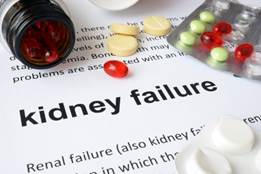
CRRT: New Solutions to an Old Problem
Continuous renal replacement therapy (CRRT) is an essential tool for treating patients with acute kidney injury, acute renal failure, and chronic renal failure when other treatment modalities are not enough.
A key concept of CCRT is to maintain therapy with minimal periods of interruption (Ronco et al. 2015). Theoretically, the circuit should only need to be changed every 72 hours. However, in septic patients, ingestions, and pediatric patients it is often necessary to change the circuit more frequently (Ronco et al. 2015).
For patients that are stable, stopping treatment to prime and replace the old circuit every 72 hours does not interrupt treatment for an extended period. However, patients that are less stable may require more frequent circuit changes. This additional downtime adds up and may result in hemodynamic instability and less effective treatment.
The manufacturers of CRRT devices cannot support any other process for changing the circuit due to the conditions of FDA approval. Therefore, the manufacturer’s representatives/website cannot educate facilities on alternative methods for changing circuits. Despite the manufacturer’s inability to support alternative processes, there are processes that have been developed and used successfully by institutions that care for a high volume of CRRT patients.
Two of these methods are circuit to circuit (Eding, Jelsma, Metz, Steen, and Wincek, 2011) and circuit to the patient, patient to circuit priming. Circuit to the patient, patient to circuit priming was first described during the CRRT 2014 conference by Cincinnati Children’s Hospital. These processes were developed to decrease the amount of exposure the patient receives from blood bank blood and to reduce circuit downtime. Although circuit-to-circuit priming has been around for several years, it is fraught with complications. The most common complication occurs when the two machines are not in sync with each other. This leads to multiple alarms and extended downtime; often resulting in removing both circuits, loss of blood product, and additional supplies (Eding, Jelsma, Metz, Steen, and Wincek, 2011).
In the circuit to circuit priming method, a second machine is set up and primed in the usual manner. Then, the settings on the second machine are matched to the settings on the original machine. At this point, the original machine is shut off and the access line is disconnected from the patient and hooked to a liter bag of saline. The access line of the second circuit is then attached to the patient. The return line of the second circuit is attached to an empty saline bag and the original return line remains attached to the patient. When these connections are made, both machines are turned on simultaneously. The result is the blood from the original circuit is returned to the patient, while blood from the patient primes the second circuit. The saline from the second circuit then fills the empty bag, and the original circuit is flushed with the saline from the full bag. When the second circuit is primed with the patient’s blood, the machines are shut off, the return line from the original circuit is disconnected from the patient, then replaced with the return line from the second circuit. Finally, the machine is turned on and treatment resumes.
The entire process takes less than five minutes and has the following advantages:
- Decreased treatment interruption time
- Decreased blood bank blood exposure
- Decreased hemodynamic instability risk
- Decreased infection risk
- Decreased risk of line clotting
As with any new process in your unit, it is essential that you consider your patient population, your physician preferences, as well as your policy and procedure.
While this process appears to be complicated, once the steps are mastered it is a user-friendly process. This process may not be valuable to stable patients; however, for those patients who are hemodynamically unstable, this process could be lifesaving.
Brush up on your renal and urinary system knowledge with this courses from RN.com: RN.com's Assessment Series: Focused Renal and Urinary Assessment.
References:
Eding, D. M., Jelsma, L. R., Metz, C. J., Steen, V. S., & Wincek, J. M. (2011). Innovative techniques to decrease blood exposure and minimize interruptions in pediatric continuous renal replacement therapy. Critical Care Nurse 31(1). doi: 10.4037/ccn2011757.
Ronco, C., Ricci, Z., De Backer, D., Kellum, J. A., Taccone, F. S., Joannidid, M., …Vincent, J. L. (2015). Renal replacement therapy in acute kidney injury: Controversy and consensus. Critical Care 19 (146). doi: 10.1186/s13054-015-0850-8.




